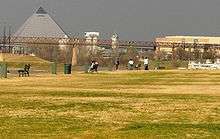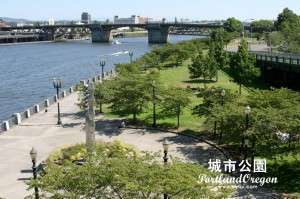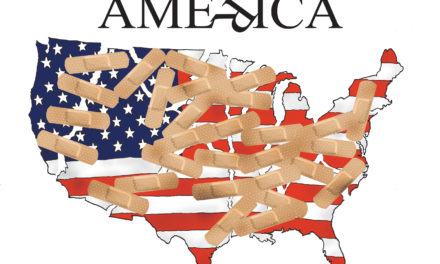Tom Lee Park is the worst riverfront park in the country.
That’s the comment made to Memphis City Council by Riverfront Development Corporation President Benny Lendermon, and surely, this is an RDC statement we can all agree to. Rarely has such prime waterfront public realm real estate been put to such abysmal use in any city.
It’s unappealing in its largely barren state, and often looks more like cows should be grazing on it than joggers racing through it. The public art looks like a speck in the flatlands, urban design is AWOL and the park programming promised way back when the sliver of land along Riverside Drive was expanded to roughly 30 acres never materialized.
Go Fly a Kite
We can remember when some major downtown advocates talked about an expanded park animated with activities – outdoor vendors, concessions, kite fliers, visual and performance artists and even jugglers. The only juggling that got done was the shift from its announced purpose as a signature public park to its present purpose as an events venue.
It seems to us that if other cities have found ways to enliven their waterfronts and turn them into magnets for activity, we should be able to do the same.
It seems to us that if we could show the initiative and the imagination to transform a large part of the Fairgrounds from acres of asphalt to a dramatic sense of arrival at the new Tiger Way and adjacent parklike area. Except for the weak name for the new greenspace, it is a bold testament to what can happen when the conventional thinking about a place is turned upside down.
More to the point, it’s what can be done when 10 event days don’t totally drive the ideas for a public site, and there are elements – light, water and concerts – that will give it life and potential to be much more than a tailgating site for football fans. It even suggests potential to even have a Bryant Park type of environment if they right user services are added.
Turning Tom Lee Park from Fair Grounds
Meanwhile, we should take that same brand of fresh thinking to Tom Lee Park. It needs something more than what it is – an unambitious, unexciting place that says volumes about our civic self-image and ambition. Today you can almost count on your fingers and toes the number of trees on this site overlooking the most spectacular views in Memphis.
At a time when the RDC is developing a master plan for Mud Island and city government is thinking through a plan of connectivity for the waterfront, it seems an equally appropriate time to consider how an improved Tom Lee Park can fit into it. Like the Fairgrounds, while we value the events that take place there, we just think that it should be a multi-purpose site.
No one values Memphis in May International Festival more than we do, but we also know that they are ultimately motivated by what’s best for the city and there should be a some reasonable way to recalibrate Tom Lee Park so that it serves the festival and the city. Truthfully, part of the impetus for Beale Street Landing was to offset and compensate for the uninspiring park to its south.
30 Years Make a Big Difference
Back to Memphis in May, after more than 30 years, most Memphians have forgotten the special role that the festival played in breathing life into a moribund city that national media had relegated to the junk heap of urban areas. From a modest tea ceremony in Court Square, a small river symphony concert and aspirations and rhetoric that outstripped all reality, the festival brought together a new generation of leaders who weren’t interested in defining Memphis in traditional terms – race and money – and instead, saw a city that could transcend the increasingly embarrassing Cotton Carnival and create an annual ritual of hope for the future.
It was 1976, and the decline of Memphis had ended. Unfortunately, it was because we had hit rock bottom.
The economy languished; the Chamber of Commerce flirted with bankruptcy and its last campaign, “Believe in Memphis” had fallen flat; Beale Street was boarded up; downtown was on life support; Stax Records was shut down; and the closed Peabody hotel was a potent reminder of Memphis’ flagging confidence in itself.
Crisis Is a Terrible Thing to Waste
And yet, there’s nothing like a crisis to inspire new thinking.
As a result, young Turks conceived a new festival called Memphis in May. Other Memphians laid the groundwork for what became the Center City Commission. A small group began to talk about creating a new generation of leaders, giving birth to Leadership Memphis. City Hall fleshed out plans to buy and revive Beale Street. A new, improved Shelby County Government was launched, complete with its own mayor. A fledgling company called Federal Express picked up momentum after erecting its first drop box. Some civic-minded Memphians published the inaugural issue of City of Memphis, which became Memphis magazine.
Back then, Memphis was all about survival, and that’s why the most important milestone wasn’t a new program, project, or political office. Rather, it was an obsessive determination — equal parts faith and desperation — to fight for Memphis’ future.
It was a sense of urgency that is all too rare in the life of Memphis. Today, there’s less of a feeling that we are facing history-altering choices, but it remains no less true.
Memphis seems to be doing a lot right these days and there is power in symbolism in projects like Fairgrounds. We’d love for Tom Lee Park to join it and as a symbol of the new spirit and new thinking that’s taking grip in our city right now.






It certainly wouldn’t hurt to plant a few more trees, the larger the better. Also, a playground area might not hurt.
On a side note, it’s Benny, not Bonny Lendermon.
I do not disagree that TLP leaves a bit to be desired. And I think there are opportunities to create a space unlike any we have. Trees, ballfields, public art on a grander scale. And I think they could co-exist with Memphis in May.
However, not every site can be everything to everyone. And there are a number of other public spaces in Memphis that provide worthy experiences. Jefferson Davis & Confederate parks offer shade and a view of the water from Downtown. Mud-Island’s Greenbelt-park offers the same. Court Square offers a very urban experience. Overton Park is an outstanding example of a large well-rounded park. TLP isn’t our only option or opportunity.
I would be interested in maintaining and programming those spaces before taking on a new project that could be duplicative when we do not adequately use existing infrastructure to its fullest. I worry that year-round programming of TLP or Beale Street Landing could actually create competition for, not compliment, other public spaces… some along the riverfront. Funds to improve the landscape may be better spent and produce greater effect in other locations.
If we plan a space that creates a one-of-a-kind placemaking experience, I might be on board. If we plan to program it and care for it, I might get excited. If we are not prepared to do that, I might rather focus on easier to accomplish improvements to other public spaces.
I have the same mental block when thinking about Shelby Farms too. Until Overton Park has a functioning public toilet that is unlocked, then what are we talking about?
An unlocked public toilet in Overton Park is an invitation to Larry Craig wannabes. I’m all for gay rights, but keep the sex in your bedroom, not in public facilities.
This doesn’t have to be a mega-project.
Our oak, poplar, cottonwood, sweetgum and sycamore trees are a abundant, inexpensive, highly-underutilized and excellent way to give Memphis form. In a decade, tight regular planting of seedlings would form colonnades along the streets, plazas and walkways of Tom Lee Park. The fields between would still be there but they would have definition and shape.
I always figured that trees were discouraged to maximize the BBQ real estate. Can the RDC fight the barbecue lobby?
Interestingly Tom Lee has more people in its pic than the Portland park. People love the park even if it’s blob-like. Adding form to people and location could make it great.
If Memphis and the county consolidated, would the county then be on the hook for the 57 million dollars the council didnt fund the schools and the resulting tax hikes they will be announcing?
Gates- wonderful suggestion. An arborway of sorts forming a rear border to the park along the parking lot and in a few key locations would do a thorough job of defining spaces throughout the park. The tree plantings could be broken at key intervals along Riverside Drive to allow glimpses of both the park and river, perhaps enticing individuals to actually stop and explore the space further.
Now you know why we think Gates of Memphis is so smart.
We don’t know if the RDC can fight the BBQ lobby, but the rest of us sure can.
Gates: We love your idea for definition, shape, and form. Write it up and we’ll all sign on so we can send to Mayor Wharton and City Council.
Off Topic:
We wish that the county would then be on the hook for the $57M but we’re told that’s not the case. It might be obligation of the urban services district. But it probably would be something decided by a court.
Gates & SCM-
Then by all means visit the following site:
http://brokensidewalk.com/2009/07/22/transportation-can-be-counter-intuitive/
Meant for Louisville’s waterfront, the park rendering in that post bears an uncanny resemblance to Tom Lee, only it is shown with trees.
Gate’s idea is spot on which is backed by the fact that a similar proposal has made it to the table several times over the years. The most recent proposal to redefine Tom Lee as a series of open “rooms” defined by regular stands of foliage can be found in the RDC’s proposals for the riverfront. While the renderings showing the desired outcome are no longer available on their site, the text description can still be accessed. I can save you some time on that proposal for the Mayor’s review:
“Without sacrificing the flexibility needed to stage the Memphis in May events, the park should be redesigned to provide a series of outdoor ‘rooms’ where openness is combined with shade, and a variety of framed views and spaces are provided. Near the river’s edge, three dimensional viewing locations would be a desirable element, obvious and accessible to tourists debarking from the park’s riverboat landing, and to the visitors attending the Memphis in May festival. The bluffs to the east of the park, and the development of Riverside Drive as a parkway should be incorporated into this redesign in order to create a series of steps, ramps, overlooks and pedestrian street crossings that connect the neighborhoods on top of the bluffs to the park”. http://www.memphisriverfront.com/projects/master-plan/open-space-a-riverfront-park-system
I thought this was posted earlier, but I thought I might try again.
As if in confirmation of Gate’s idea, it should be noted that it has been raised several times over the years. The current RDC plan for the riverfront describes the “new” Tom Lee as a park with a series of “rooms” or spaces defined by a higher level of landscaping- most notably tree stands and alleys but still programmed to host MIM. You might check out their webpage in creating that write up for the mayor’s office.
At the site below you will find an image (night time rendering- 3 or 4 down) depicting Louisville’s waterfront. It bears an uncanny resemblance to Tom Lee including its relationship to the central business district.
http://brokensidewalk.com/2009/03/04/striking-visions-of-louisvilles-future-within-our-grasp/
Gates of Memphis has a great suggestion. Tom Lee reminds me of the expanse of Burnham Park on the South Side of Chicago from 47th to 35th. Adding shade along the promenades would go a long way.
Tom Lee park is a joke right now. It could be so much better. It’s probably been soaking up enough money that it should have been decades ago.